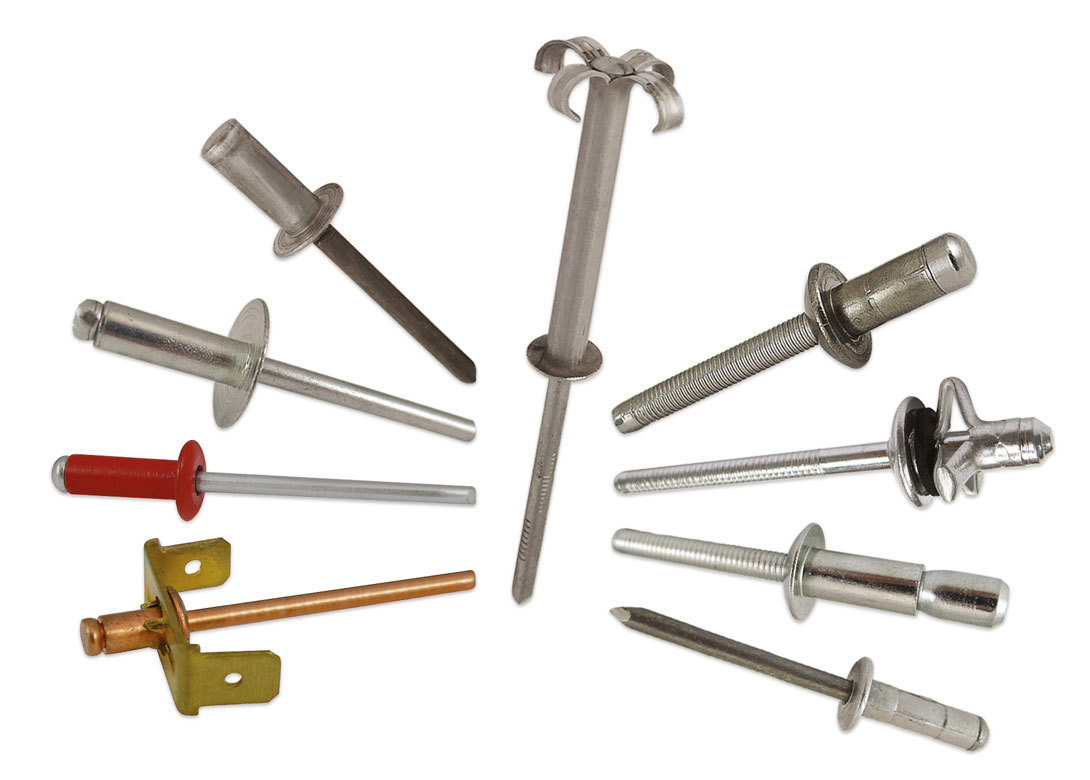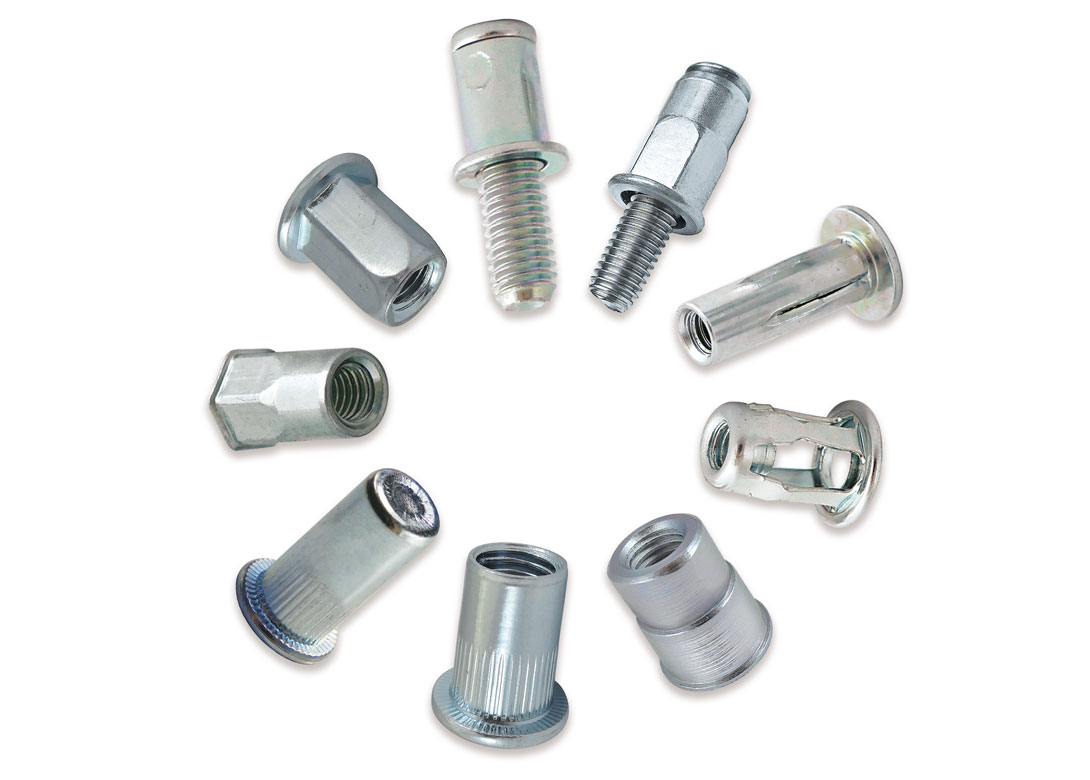
Here Rivit Srl looks at the benefits of blind rivets and identifies the key factors to be taken into consideration when choosing the correct blind rivet.
As a general feature, both blind rivets and rivet nuts are non-removable fastening systems; to be placed they need an already made hole (called pre-hole) in the sheet, and once installed, they create threads on parts that are not accessible from the rear.
Their application does not damage or deform the surface treated materials and they can be placed having access from one side only of the sheet, and for this reason they are called ‘blind’.
Blind rivets
Blind rivets allow the joining of parts made of different materials, normally sheet metal. The parts to be joined can also be completely different from each other (i.e. sheet metal and plexiglass).
The blind rivets are made up of a mandrel and a body, which may be either the same material (steel/steel) or of different materials (aluminium/steel). To identify the correct blind rivet for the requirements, the following criteria must be taken into consideration:
- Material of the mandrel and of the body.
- Head of the body (dome, countersunk, large).
- Hole diameter where the blind rivet will be placed.
- Grip range.
When the above elements are known, the user can decide the dimensions of the blind rivet – diameter and length of the body. The empirical formula to calculate the necessary length is given by the diameter of the hole and the thickness to be tightened.
Other factors that need to be considered include:
- Mechanical characteristics required by the application, i.e. shear and tensile strengths.
- Required performance – if rivets are in contact with fluids, which do not have to pass through, watertight rivets are necessary, to resist vibrations increase shear and tensile strengths.
- Aesthetic feature – if the rivets have to be applied on a coloured surface, coloured rivets are used according to the RAL scale finishes.
The Rivit range of blind rivets includes standard blind rivets, structural blind rivets – such as Rivbu, Rivinox, Lockriv, Magnariv, Monriv – Speedriv rivets in cartridge, rivets for special applications, watertight sealed rivets and plastic rivets.

Rivet nuts
Rivet nuts allow the creation of threads on thin sheet metal surfaces. Essentially, rivet nuts are bushings with a threaded seat and a chamber to be expanded into for the permanent deformation on metal or plastic sheets. They are suitable for receiving other elements to be assembled through the use of screws. This type of fastener is recommended for assembly of boxed shaped and tubular parts.
To identify the correct rivet nut for the requirements, the following criteria must be taken into consideration:
- Material of the rivet nut (aluminium, steel, stainless steel).
- Head of the rivet nut (dome, reduced, countersunk).
- Type of shank – cylindrical, hexagonal or semi-hexagonal, knurled or plain.
- Metric thread type (according to the screw to be used).
- Mechanical characteristics required by the application, i.e. tensile strength.
- Total grip range (torsional moment).
- Required performance – if the rivet nuts are placed in contact with fluids, which do not have to pass through, watertight rivet nuts are necessary.
The rivet nuts can be used to assemble thin sheet materials, such as gaskets and lids on frames, or other light joints in automotive, aerodynamic and aerospace industries. They can be used for fastening more elements together in agricultural equipment, civil works and sliding doors assemblies.
Riveters available to place the rivet nuts includes hand riveters, which are easy to use and ideal for non-continuous work; hydro pneumatic riveters – for professional and continuous installation work; as well as battery riveters – which are easier to handle and transport.


Will joined Fastener + Fixing Magazine in 2007 and over the last 12 years has experienced every facet of the fastener sector – interviewing key figures within the industry and visiting leading companies and exhibitions around the globe. Will manages the content strategy across all platforms and is the guardian for the high editorial standards that the brand is renowned.





